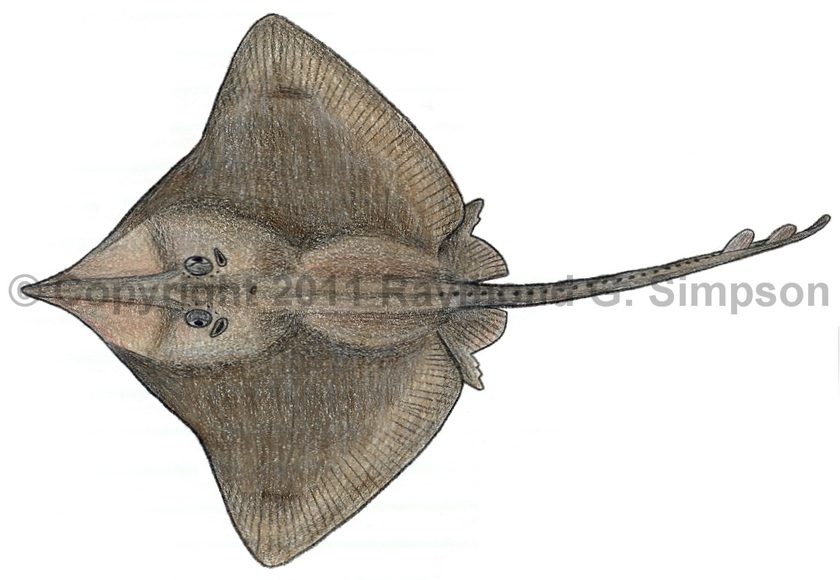
Common Name
Thintail Skate
Year Described
Krefft & Stehmann, 1975
Identification
Disk spade-shaped with a concave anterior margin. Snout very long. Mouth width three times in preoral length. Pectoral fins angular. Anterior pelvic fin lobe about 80% as long as the posterior lobe. Tail about half of TL, relatively thin, and has low skin folds on both sides. There are two dorsal fins, separated from each other by a distance less than one half of first dorsal base. The caudal fin consists of a moderately developed lobe.
Body is smooth above, with dermal denticles restricted to the snout. There are several orbital thorns, and 0-1 nuchal thorn on the head. Scapular thorns present. No thorns on midline of body anterior to pelvic base. Tail with a single row of 16 thorns. One thorn present between the dorsal fins. Ventral surface without dermal denticles except for around snout. Interbranchial space rough.
Color
Dorsal surface brown with indistinct pale blotches. Ventral surface pale.
Size
An immature specimen was 67cm TL. Most likely over 100cm when mature.
Habitat
Demersal around 500m.
Range
So far known from off southeastern Brazil.
References
Díaz de Astarloa, J.M., E. Mabragaña, R. Hanner and D.E. Figueroa. 2008. Morphological and molecular evidence for a new species of longnose skate (Rajiformes: Rajidae: Dipturus) from Argentinean waters based on DNA barcoding. Zootaxa 1921:35-46.
Gomes, U.L. and S. Picado, 2001. Distribution of the species of Dipturus Rafinesque (Rajidae, Rajinae, Rajini) of Brazil and first record of the Caribbean skate D. teevani (Bigelow & Schroeder), in the western South Atlantic. Revista Brasileira de Biologia, 18(1): 171-185.